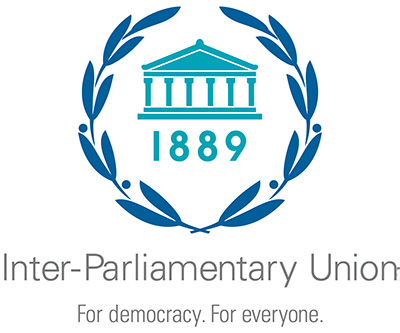INFO BOX 4:
International Humanitarian Law
International humanitarian law (IHL) regulates the actions of States in conducting warfare; it serves in particular to protect civilians and other non-combatants from the effects of warfare. It is a major part of the international law of armed conflict.
IHL core principles are set out in widely ratified treaties, most notably the Geneva Conventions of 1949, Geneva Protocols of 1977 and the Convention on Certain Conventional Weapons of 1980 (Inhumane Weapons Convention). They are integrated into the military law provisions of most countries, and are accepted as binding international law, applicable in wartime even when a state is not party to relevant international treaties. They include the principles of:
- Distinction – it is prohibited to attack civilians and other non-combatants as well as civilian infrastructure;
- Discrimination – it is prohibited to carry out attacks that indiscriminately harm civilians and other non-combatants as well as civilian infrastructure;
- Humanity – it is prohibited to inflict unnecessary suffering and superfluous injury on combatants;
- Environmental protection – it is prohibited to attack the environment as a form of reprisal, or to cause widespread, long-term and severe damage to the environment.
Law of peace and security
Whereas IHL relates primarily to the laws governing armed conflict once it has begun (known as jus in bello), there is also a body of peace and security law (jus ad bellum) governing the authority required to engage in armed conflict. It is codified primarily in the UN Charter, Articles 2, 33-38 and 51. Article 2 prohibits the threat or use of force and requires States to resolve international conflicts in peaceful ways. Articles 33-38 outline approaches and mechanisms States and the Security Council should take to resolve conflicts peacefully, and Article 51 provides the exception for when States are permitted to use force, i.e. in response to an attack unless and until the Security Council has taken action to resolve the situation.
Human Rights Law
The International Covenant on Civil and Political Rights (ICCPR) is a major human rights treaty with 172 States Parties, including every nuclear-armed State, except China. Article 6(1) of the Covenant provides: ‘Every human being has the inherent right to life. This right shall be protected by law. No one shall be arbitrarily deprived of his life.’
On October 30, 2018, the UN Human Rights Committee, a body established by the ICCPR, adopted General Comment (no. 36) on the Right to Life set out in Article 6. The committee affirmed that the Right to Life is an ‘entitlement of individuals to be free from acts and omissions that are intended or may be expected to cause their unnatural or premature death, as well as to enjoy a life with dignity’, and that this is a ‘supreme right from which no derogation is permitted even in situations of armed conflict and other public emergencies which threatens the life of the nation.’ This right is ‘the prerequisite for the enjoyment of all other human rights.’
Application of IHL, Peace Law and Human Rights Law to Disarmament
IHL, the law of peace and security and human rights law usually apply to the methods of warfare and the use of weapons, not specifically to prohibitions on production or possession of the weapons or obligations to disarm.
However, there is a principle that if the use of a weapons system would generally violate IHL and/or human rights law, then there is an obligation to prohibit and eliminate that weapon. This connection between human rights law/IHL and disarmament is recognised in a number of treaties, as well as by the International Court of Justice and the Human Rights Committee. It is also recognised in various places in the UNSG’s Disarmament Agenda.
The Preamble of the Convention on Certain Conventional Weapons (CCW), for example, notes that the provisions of IHL provide a basis to ‘prohibit or restrict further the use of certain conventional weapons… with a view to putting an end to the production, stockpiling and proliferation of such weapons.’
The Human Rights Committee General Comment 36, after affirming that the threat or use of weapons of mass destruction would violate the Right to Life, concludes therefore that ‘States Parties must take all necessary measures to stop the proliferation of weapons of mass destruction, including measures to prevent their acquisition by non-state actors, to refrain from developing, producing, testing, acquiring, stockpiling, selling, transferring and using them, to destroy existing stockpiles, and to take adequate measures of protection against accidental use, all in accordance with their international obligations.’
The International Court of Justice, in its 1996 Advisory Opinion on the Legality of the Threat or Use of Nuclear Weapons, after affirming that ‘that the threat or use of nuclear weapons would generally be contrary to the rules of international law applicable in armed conflict, and in particular the principles and rules of humanitarian law’, then concluded unanimously that ‘There exists an obligation to pursue in good faith and bring to a conclusion negotiations leading to nuclear disarmament in all its aspects under strict and effective international control.’
The UNSG’s Disarmament Agenda notes that ‘In order to give greater clarity and expression to the general rules of international law, the international community has also sought to progressively codify and develop rules to prohibit and restrict specific types of weapons, due to their disproportionate, uncontrollable or inhumane effects.’ This has led to international treaties to prohibit biological, chemical and nuclear weapons, as well as landmines and cluster munitions, and a protocol to the CCW to prohibit blinding laser weapons.
Further application of IHL and Human Rights Law to nuclear disarmament
Nuclear-armed States and their allies acknowledge that IHL applies to use of nuclear arms as it does to any act of war. That creates an opening to oppose reliance on nuclear weapons as irreconcilable with our common humanity. This is supported by additional references to the IHL and human rights imperatives to achieve nuclear disarmament:
The International Committee of the Red Cross (ICRC) and the International Red Cross and Red Crescent Movement are considered to be leading authorities on and guardians of IHL. They have given particular attention to the application of IHL to nuclear weapons and the imperative this gives to nuclear disarmament. This has included ICRC statements to the United Nations and International Court of Justice (1995) and resolutions adopted by the Council of Delegates of the International Red Cross and Red Crescent Movement in 1948, 1952, 1957, 1965, 1969, 1977, 1981, 2009 and 2011. In their 2011 resolution, for example, the Council of Delegates ‘finds it difficult to envisage how any use of nuclear weapons could be compatible with the rules of international humanitarian law, in particular the rules of distinction, precaution and proportionality,’ and calls on States therefore ‘to pursue in good faith and conclude with urgency and determination negotiations to prohibit the use of and completely eliminate nuclear weapons through a legally binding international agreement, based on existing commitments and international obligations.’
The 2017 Treaty on the Prohibition of Nuclear Weapons, in its preamble, considers that ‘any use of nuclear weapons would be contrary to IHL,’ and also reaffirms that any use of nuclear weapons would be ‘abhorrent to the principles of humanity and the dictates of public conscience,’ factors with legal as well as moral value. This is provided as one of the principal reasons for the goal of the treaty to achieve ‘a legally binding prohibition of nuclear weapons.’
The UN Human Rights Committee, in General Comment 36 (see above), highlighted the application of the Right to Life to nuclear disarmament by affirming that States ‘must also respect their international obligations to pursue in good faith negotiations in order to achieve the aim of nuclear disarmament under strict and effective international control and to afford adequate reparation to victims whose right to life has been or is being adversely affected by the testing or use of weapons of mass destruction, in accordance with principles of international responsibility.’






